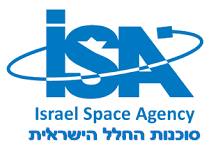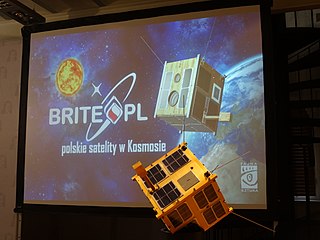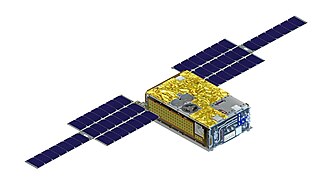
Space exploration is the use of astronomy and space technology to explore outer space. While the exploration of space is carried out mainly by astronomers with telescopes, its physical exploration is conducted both by uncrewed robotic space probes and human spaceflight. Space exploration, like its classical form astronomy, is one of the main sources for space science.

Asteroid impact avoidance comprises the methods by which near-Earth objects (NEO) on a potential collision course with Earth could be diverted away, preventing destructive impact events. An impact by a sufficiently large asteroid or other NEOs would cause, depending on its impact location, massive tsunamis or multiple firestorms, and an impact winter caused by the sunlight-blocking effect of large quantities of pulverized rock dust and other debris placed into the stratosphere. A collision 66 million years ago between the Earth and an object approximately 10 kilometres wide is thought to have produced the Chicxulub crater and triggered the Cretaceous–Paleogene extinction event that is understood by the scientific community to have caused the extinction of all non-avian dinosaurs.

The Lincoln Near-Earth Asteroid Research (LINEAR) project is a collaboration of the United States Air Force, NASA, and the Massachusetts Institute of Technology's Lincoln Laboratory for the systematic detection and tracking of near-Earth objects. LINEAR was responsible for the majority of asteroid discoveries from 1998 until it was overtaken by the Catalina Sky Survey in 2005. As of 15 September 2011, LINEAR had detected 231,082 new small Solar System bodies, of which at least 2,423 were near-Earth asteroids and 279 were comets. The instruments used by the LINEAR program are located at Lincoln Laboratory's Experimental Test Site (ETS) on the White Sands Missile Range (WSMR) near Socorro, New Mexico.
The Microvariability and Oscillations of Stars/Microvariabilité et Oscillations STellaire (MOST), was Canada's first space telescope. Up until nearly 10 years after its launch it was also the smallest space telescope in orbit. MOST was the first spacecraft dedicated to the study of asteroseismology, subsequently followed by the now-completed CoRoT and Kepler missions. It was also the first Canadian science satellite launched since ISIS II, 32 years previously.

Cascade, Smallsat and Ionospheric Polar Explorer (CASSIOPE), is a Canadian Space Agency (CSA) multi-mission satellite operated by the University of Calgary. The mission development and operations from launch to February 2018 was funded through CSA and the Technology Partnerships Canada program. In February, 2018 CASSIOPE became part of the European Space Agency's Swarm constellation through the Third Party Mission Program, known as Swarm Echo, or Swarm-E. It was launched September 29, 2013, on the first flight of the SpaceX Falcon 9 v1.1 launch vehicle. CASSIOPE is the first Canadian hybrid satellite to carry a dual mission in the fields of telecommunications and scientific research. The main objectives are to gather information to better understand the science of space weather, while verifying high-speed communications concepts through the use of advanced space technologies.

The Israel Space Agency is a governmental body, a part of Israel's Ministry of Science and Technology, that coordinates all Israeli space research programs with scientific and commercial goals.

The National Aeronautics and Space Administration is an independent agency of the U.S. federal government responsible for the civil space program, aeronautics research, and space research. Established in 1958, NASA succeeding the National Advisory Committee for Aeronautics (NACA), to give the U.S. space development effort a distinctly civilian orientation, emphasizing peaceful applications in space science. NASA has since led most American space exploration, including Project Mercury, Project Gemini, the 1968–1972 Apollo Moon landing missions, the Skylab space station, and the Space Shuttle. NASA currently supports the International Space Station and oversees the development of the Orion spacecraft and the Space Launch System for the crewed lunar Artemis program, the Commercial Crew spacecraft, and the planned Lunar Gateway space station.

The Space Surveillance Telescope (SST) is a Southern Hemisphere based U.S. Space Force telescope used for detecting, tracking and cataloguing satellites, near-Earth objects and space debris.

NEO Surveyor, formerly called Near-Earth Object Camera (NEOCam), then NEO Surveillance Mission, is a planned space-based infrared telescope designed to survey the Solar System for potentially hazardous asteroids.

The Sentinel Space Telescope was a space observatory to be developed by Ball Aerospace & Technologies for the B612 Foundation. The B612 Foundation is dedicated to protecting the Earth from dangerous asteroid strikes and Sentinel was to be the Foundation's first spacecraft tangibly to address that mission.
Sapphire is a Canadian space surveillance satellite which was launched in 2013. Sapphire was commissioned and integrated by MacDonald, Dettwiler and Associates (MDA) based on an SSTL-150 bus produced by Surrey Satellite Technology (SSTL) and an optical payload produced by COM DEV International.
The Maritime Monitoring and Messaging Microsatellite (M3MSat) is a tele-detection satellite developed by the Canadian Space Agency and launched in 2016. Its mission is to demonstrate and test the technology to assess the utility of having in space an Automatic Identification System (AIS) for reading signals from vessels to better manage marine transport in Canadian waters. The system will be supported by an instrument called a Low Data Rate Service (LDRS), which transmits AIS messages to ground sensors.

Vegetation and Environment monitoring on a New Micro-Satellite (VENµS) is a near polar sun-synchronous orbit microsatellite. It is a joint project of the Israeli Space Agency and CNES. The project was signed upon in April 2005 and was launched on the 2nd of August 2017. The microsatellite, which was set to cost the ISA US$20 million and CNES €10 million, was designed and built by IAI and Rafael under ISA's supervision.

BRITE-Constellation is an ongoing space mission carrying out two-band photometry in wide fields with a constellation of six (presently, three operational) BRIght Target Explorer (BRITE) nanosatellites. The mission was built by a consortium of three countries, Canada, Austria, and Poland, each operating two BRITE satellites. The six satellites were launched into low-Earth orbits between February 2013 and August 2014. Each satellite is a cube-shaped spacecraft with sides of 20 centimetres (7.9 in) hosting an optical telescope of 3 centimetres (1.2 in) aperture feeding an uncooled CCD with a field of view of approximately 20° × 24°. The satellites were intended for photometry of the brightest stars in single passband located in the blue (three satellites) or red (the other three satellites) part of the optical range.
The Space Safety Programme, formerly the Space Situational Awareness (SSA) programme, is the European Space Agency's (ESA) initiative to monitor hazards from space, determine their risk, make this data available to the appropriate authorities and where possible, mitigate the threat.

The Near-Earth Asteroid Scout was a mission by NASA to develop a controllable low-cost CubeSat solar sail spacecraft capable of encountering near-Earth asteroids (NEA). NEA Scout was one of ten CubeSats launched into a heliocentric orbit on Artemis 1, the maiden flight of the Space Launch System, on 16 November 2022.

EQUULEUS is a nanosatellite of the 6U CubeSat format that will measure the distribution of plasma that surrounds the Earth (plasmasphere) to help scientists understand the radiation environment in that region. It will also demonstrate low-thrust trajectory control techniques, such as multiple lunar flybys, within the Earth-Moon region using water steam as propellant. The spacecraft was designed and developed jointly by the Japan Aerospace Exploration Agency (JAXA) and the University of Tokyo.












